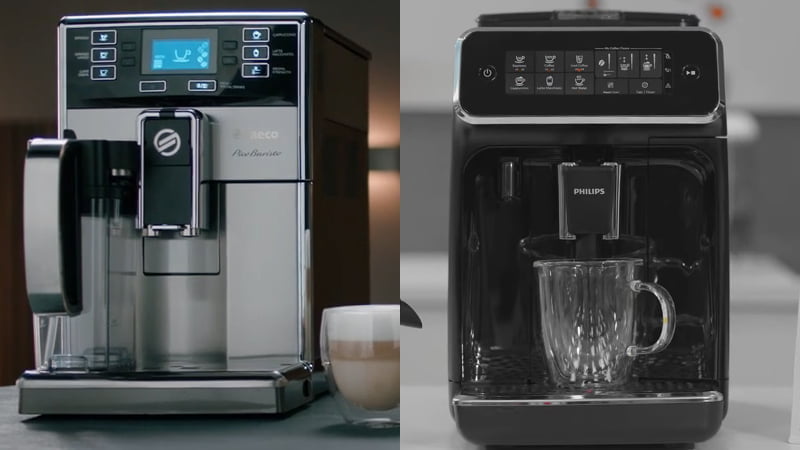Saeco Picobaristo vs Philips 3200: Intriguingly, they originate from the same parent company. Indeed, both Saeco and Philips are subsidiaries of a Dutch multinational corporation known as Koninklijke Philips N.V. As such, their similarity is expected, although the former outperforms the latter marginally.
With an automated milk frothing system and a wide range of customizable beverage options, the Saeco Picobaristo is just like your personal bartender, who is ready to whip up a decaffeinated delight at any moment. Longing for a latte macchiato with delicate, fluffy foam? It’s only seconds away! Want double espresso shots? They’re coming right up!
The Philips 3200 is also a super-automatic espresso machine that’s easy to use and doesn’t cost an arm and a leg. This one has several characteristics that set it apart from its peers, such as a built-in ceramic flat burr grinder and 12 grind settings. Of course, as with all other budget-friendly models, there are some inevitable compromises on this model.
Saeco Picobaristo Vs Philips 3200: Comparison Chart




Last update on 2025-04-13 / Affiliate links / Images from Amazon Product Advertising API
Saeco Picobaristo Vs Philips 3200: Differences
The Saeco Picobaristo narrowly wins the Philips 3200 with a score of 4-3. So let’s delve into the details immediately for more insightful revelations!
Coffee Flavour
Winner: Saeco Picobaristo
Built-in Grinder
One thing that the Saeco Picobaristo vs Philips 3200 have in common is a ceramic flat burr grinder. I was very glad when I saw this type of grinder on these machines since it carries numerous advantages over its stainless steel counterpart.
Let’s start with its pretty tolerable noise levels. The ceramic grinder tends to be quieter compared to stainless steel grinders, but it’s not exactly whisper-quiet. If you’re trying to sneak in an early morning espresso brew, it might be loud enough to disrupt the tranquility and wake up your entire family. Would you relish your coffee while being met with glaring eyes from others? That’s not something I enjoy!
The ceramic grinder also has a reputation for durability. It may not be as durable as the stainless steel grinder, but it’s advertised as capable of delivering at least 20,000 cups of exquisite coffee. It’s too soon to verify this, so I’m hopeful that the manufacturer’s statement holds water.
Its biggest selling point is that the ceramic grinder always stays cool while operating instead of overheating. This prevents the burning of coffee grounds and thereby saves the flavor of the espresso from a bitter and unpleasant flavor.
Now switch attention to the number of grind settings on each one, another factor that should be taken into account. In the realm of espresso machines, the wider the array of grind settings, the easier it is to find the right grind size for your preferences. The Saeco Picobaristo has 10 grind settings, whereas the Philips 3200 offers up to 12 – that’s significantly higher than the industry standard of 6! This blew my mind, especially considering their sub-1000 price tag.
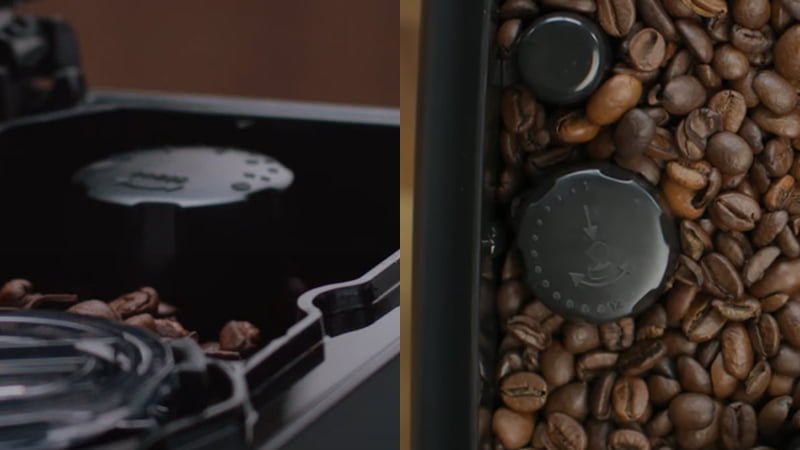
Just press down on the knob and rotate it one at a time to change the grind size: Turn the knob counterclockwise for a finer grind and clockwise for a coarser one. Also, remember that altering the grind size while the grinder isn’t running is a big no-no since this could result in a jam. Philips suggests only adjusting the grinder settings after making the first 100 to 150 cups – I didn’t adhere to this rule and didn’t encounter any issues, but I wouldn’t recommend following in my footsteps.
Heating System
Both have a single boiler equipped with Thermoblock technology. So they basically can’t steam milk and brew espresso at the same time as machines with double boilers, but you don’t have to wait too long for your favorite drink either, thanks to Thermoblock technology.
The Thermoblock heating system heats up only the exact amount of water required for each process, which means it can reach the optimal temperature in mere seconds, unlike traditional boilers that take minutes. As a result, these machines can brew almost non-stop, from cup to cup, without any noticeable delay. As a bonus, it curtails power consumption and guarantees that your espresso is always brewed with fresh water.
Brewing System
Another thing in common between the Saeco Picobaristo vs Philips 3200 is the pre-infusion. Before the extraction process begins, the coffee ground will be soaked in hot water, allowing them to swell up, or “bloom,” for maximum flavor and aroma extraction. This phase also ensures that the coffee ground is evenly wet before full pressure is applied, which can prevent “channeling” when water finds a path through the grounds that doesn’t extract flavor evenly.
Then, the extraction will take place at a pressure of 15 bars. But wait, what is a “bar”? Unlike drip coffee machines, which rely on gravity to extract, espresso machines rely on pressure to pull a shot of espresso. A “pump bar,” or simply “bar,” is a unit of pressure measurement in espresso machines – the ideal pressure is generally 8-9 bars.
My observation with the Philips 3200 resulted in an espresso that was dispensed too quickly and tasted weak, with not much crema. The root of this problem lies in the quick dispensing of espresso, resulting from the large holes in its filter basket. Most filter baskets, including that of the Saeco Picobaristo, have much smaller holes – these create resistance, resulting in a thorough extraction of coffee oils and thus yielding bold, rich espressos. Luckily, upon deep-diving into Google, I found three troubleshooting tips that really worked:
- Choose a finer grind setting – 3 or 4 setting is best.
- Increase the water temperature to the “high” or “max” setting.
- Increase the coffee’s strength.
Milk Frothing System
The Saeco Picobaristo vs Philips 3200 are both equipped with an automatic frothing milk system that facilitates creating milk foam at the push of a button – nothing more, nothing less. Note that the version I am referring to is the Philips 3200 LatteGo. But if you’re looking to sharpen your latte art skills and awaken your inner barista, the Saeco Picobaristo with a manual steam wand should be on your radar.
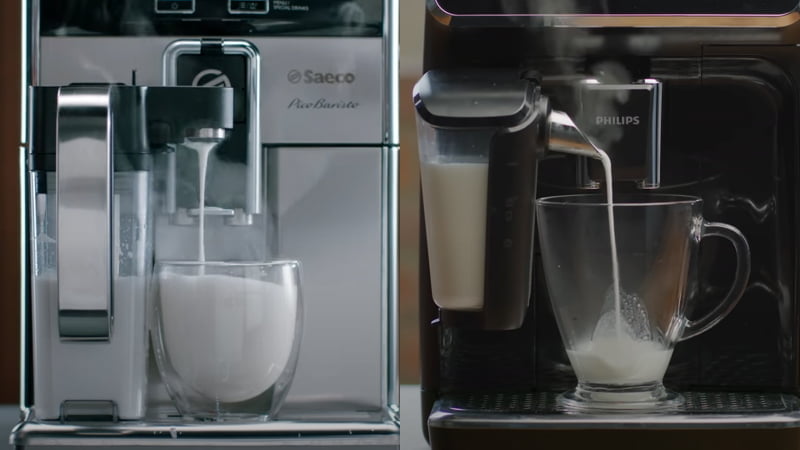
The Saeco Picobaristo’s milk system includes just an integrated milk pitcher that sits neatly on the side of the machine and doesn’t take up extra space or necessitate any tubes where milk can easily accumulate and harden. All you have to do is simply fill the carafe with milk (or non-dairy milk), fit it into the hot water dispensing slot, open the milk spigot, and you’re ready to froth milk. When the milk froth is complete, a button press is all it takes to rinse the spout. The carafe is dishwasher-friendly and can be tucked into the fridge to prevent the milk from spoiling within days.
The milk foam produced from the Picobaristo was light and airy, ideal for a beautifully multi-layered latte macchiato. It would just be better if the texture of the foam could be adjusted since after all, different milk-based drinks need different textures of foam. Also, the hot water dispensing spout needs to be taken out for frothing milk, which can be inconvenient for some people.
Likewise, the Philips 3200’s automatic milk frother called the LatteGo system, comes in three parts: a clear milk carafe, a lid, and a black plastic clip. The clip features notches that determine the quantity of milk to pour. What I didn’t like about this system was that the lid didn’t have a hinge to secure it and felt flimsy. Ensure the milk jug is firmly clipped in, or you will end up with a mess. Similar to the Saeco Picobaristo carafe, it’s dishwasher safe and can be refrigerated.
Unfortunately, its quality foam has left a bit of a sour taste in my mouth. I found the Philips 3200 just slightly aerated the milk and left not much foam on the surface, thereby failing to make a perfect cappuccino or latte. But anyway, if you’re not too fussy about the milk texture, you still get a reasonable facsimile of those milk-infused drinks.
Design & Usability
Winner: Tie
Dimensions, Footprint, & Weight
| Saeco Picobaristo | Philips 3200 | |
|---|---|---|
| Dimensions | 8.7 x 13.2 x 17.2 inches | 9.7 x 14.6 x 17 inches |
| Weight | 22.04 lbs | 17.7 lbs |
The Saeco Picobaristo has an all-metal exterior that looks sleek and robust, feeling like something that will stand the test of time. With a two-tone stainless steel chassis, some chrome accents, and corners, it looks more like a futuristic PC with coffee-making functions than just a mid-range espresso machine.
The Philips 3200, on the other hand, is a simple but classy machine. This one features a glossy black plastic finish and some chrome accents, which give it a luxe and sturdy appeal without inflating the price tag.
The Saeco Picobaristo vs Philips 3200 are both compact espresso machines that don’t take up too much space. But with the Saeco Picobaristo constructed largely from stainless steel, it naturally weighs more than its counterpart, despite comparable dimensions. But since the machine is typically unboxed and stationed in a fixed location just once, its weightiness shouldn’t be a major issue.
Pre-programmed Coffee Options
| Saeco Picobaristo | Philips 3200 |
|---|---|
| Espresso Espresso Lungo Cappuccino Latte macchiato Ristretto Caffe crema Double espresso Cappuccino Baby cappuccino Flat white Milk froth Hot water | Espresso Black Coffee Americano Cappuccino Latte Macchiato Hot Water |
Both the Saeco Picobaristo vs Philips 3200 are machines geared toward home use, so, of course, they don’t have a whopping list of drinks. If you need something to put in high-traffic areas, consider more expensive machines, such as the Jura Z10, with up to 32 preset options.
The hot water option is a welcome addition, which allows you to make tea quickly instead of looking for the traditional kettle. Given that hot water doesn’t flow through the milk spout, rest easy knowing there’s no risk of milk residue ending up in your tea.
These machines don’t tie you to their pre-programmed drinks. Instead, they empower you to change each preset with several adjustable settings. The Saeco Picobaristo offers 5 levels of coffee strength and 3 brewing temperatures, while the Philips 3200 has 3 coffee strength levels and brewing temperatures. Furthermore, the ‘Memo’ function lets you tailor the quantities of coffee and milk to your preference and remember these settings for future one-touch operations. It would be better if there were a “user profile” feature that allows multiple users to save separate settings for the same drink.
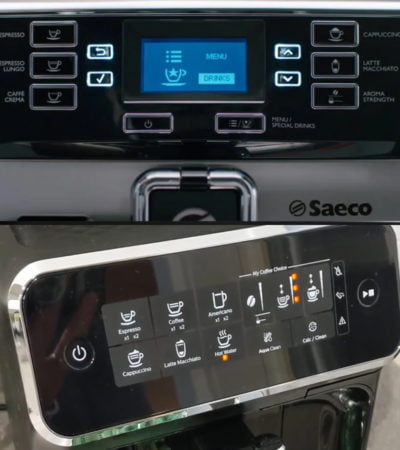
These also accept pre-ground coffee, which can be added via a small door called a bypass doser. Indeed, most automatic espresso machines on the market include this handy feature to enable the brewing of decaffeinated versions of your beloved beverages whenever you find yourself out of beans. It is also a best friend of people who refuse to tolerate caffeine for some reason, such as pregnant women.
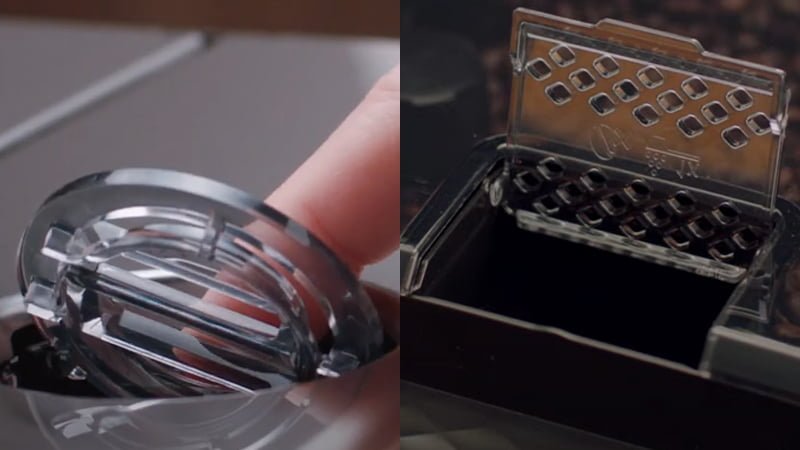
Spout & Cup Clearance
| Saeco Picobaristo | Philips 3200 | |
|---|---|---|
| Spout Type | Dual | Dual |
| Cup Clearance | 3.0-6.5 inches | 3.3–6.9 inches |
Their dual coffee dispensing spigots can be raised up to over 6.5 inches, allowing them to fit into my biggest mugs. This is a boon for strong drinkers who always need a double shot to quench their caffeine thirst. You and your loved one can also get two espressos at once on those busy mornings. Regarding a double shot, they really brew two separate espressos rather than just doubling the water for an equal quantity of coffee grounds.
My sole complaint is that the milk spout sits relatively high compared to some cups, and the milk has to travel quite a distance down, particularly when preparing smaller drinks like a cappuccino. This can lead to miscalculating your cup placement, resulting in possible spillage on your counter.
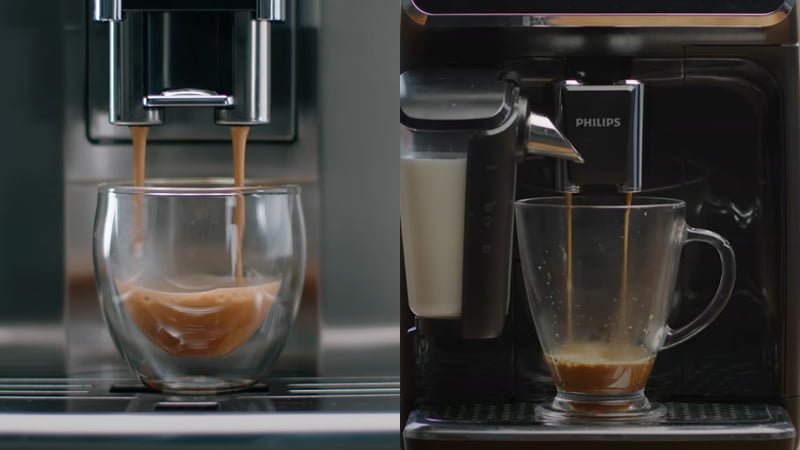
Water Reservoir & Bean Hopper
| Saeco Picobaristo | Philips 3200 | |
|---|---|---|
| Water Reservoir | 1.77 liter | 1.8 liter |
| Bean Hopper | 0.26 liter | 0.28 liter |
Their water tanks are typically spacious enough for home use without frequent refills, provided no one in your household consumes coffee as if it’s their only source of hydration. They can also pair with an included AquaClean water filter, reducing the descaling needs of the machine by filtering out water impurities – the main perpetrator behind scale formation in the machine, leading to less than stellar espressos.
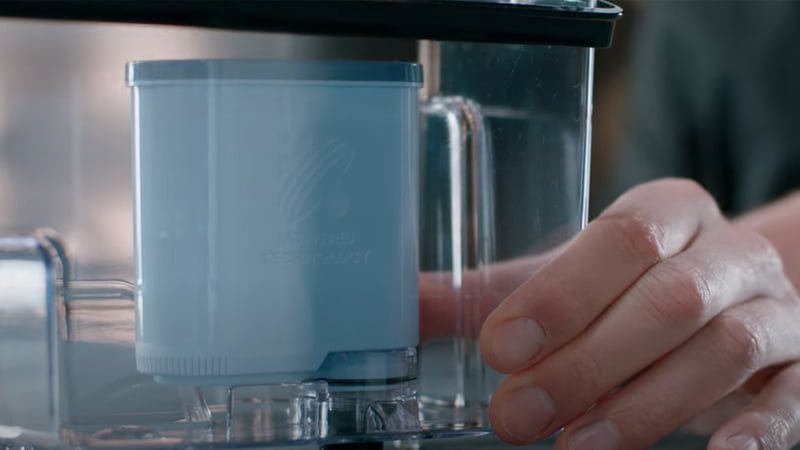
The manufacturer purports that with the use of the filter, the machine requires descaling only after serving up 5000 cups of coffee, implying you won’t have to descale it for several years. However, this implies a recurring monthly cost of $25, making it a pricier alternative compared to descaling the machine traditionally using a descaler. You can also switch to distilled water if you want. After all, just choose what works best for you and your lifestyle.
Their bean compartments are situated at the top and equipped with airtight lids to shield the beans from air exposure – the key to maintaining their freshness over an extended period.
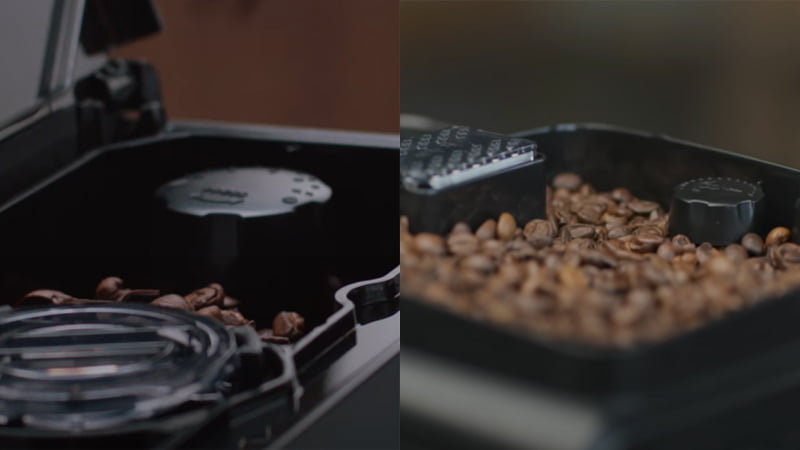
Cleaning & Maintenance
Winner: Tie
Unlike traditional espresso machines, cleaning and maintenance of these super automatics are a breeze with some automatic programs. Of course, there are still some manual tasks to undertake, such as emptying the drip tray and dregs basket, washing and lubricating the removable brew group, and wiping down the housing – all are easy and swift.
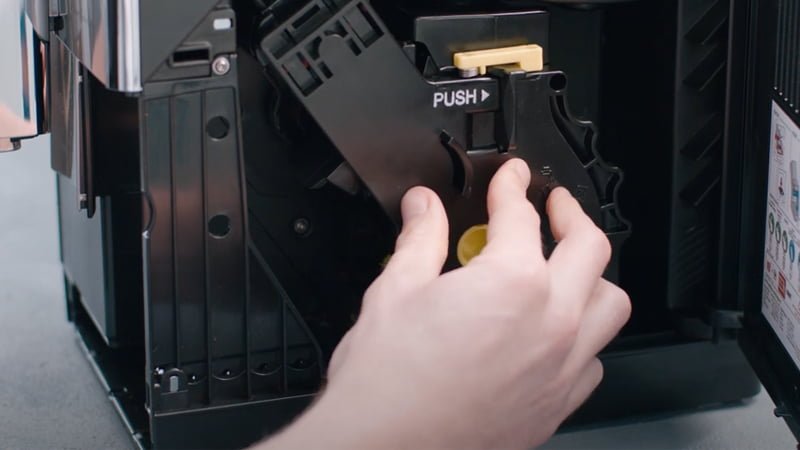
Following each preparation of a milk-infused beverage, an automatic cleaning cycle is triggered to eliminate any accumulation of milk residue within the circuit. By the day’s end, a thorough rinse of the milk carafe under running water is recommended, or you could simply place it in the dishwasher.
Descaling the machine is automated as well and takes less than 30 minutes with the Philips descaler (recommended only). And as mentioned earlier, you’ll find you don’t have to descale the machine as often if you choose to use the filter.
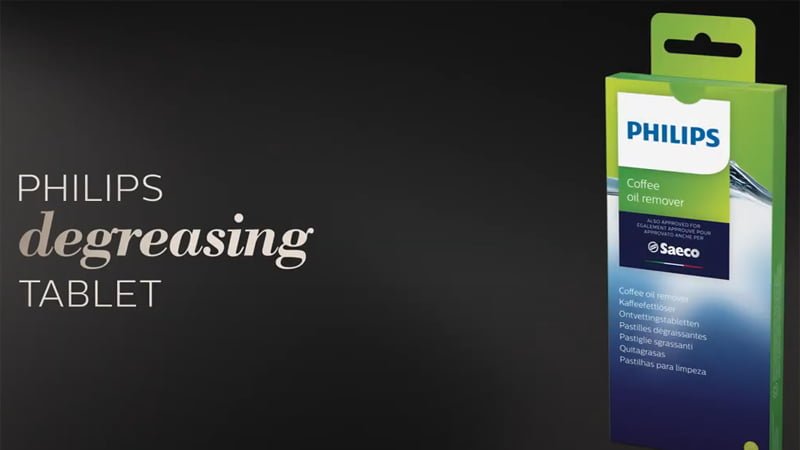
Utilities & Other Features
Winner: Tie
These mid-range espresso machines don’t have advanced features. The only thing they have is the Standby feature, which reduces power consumption. You can set the standby time to 15, 30, 60, or 180 minutes. They don’t come equipped with an automatic shut-off function, so it is essential to switch them off after each brewing cycle to conserve energy.
Quick Rundown Of Saeco Picobaristo
- Note: 1)Too coarse a grind, too little coffee, or insufficiently tamping the grounds before brewing can all lead to inadequate pressure for a proper brew. 2)It is important to note that the amount of espresso extracted will vary depending on the grind size and amount and reprogramming may be needed when the size and amount are adjusted
- Easily select one of 15 delicious drinks, or customize it to your taste with coffee equalizer and save it to one of 6 user profile
- Our Patented AquaClean water filter eliminates the need to descale for up to 5,000 cups
- Get superior taste for 20,000 cups with our durable ceramic grinders
- The hygiesteam function cleans the whole Milk circuit with steam, from the spout to the milk tubes
Last update on 2025-04-13 / Affiliate links / Images from Amazon Product Advertising API
Quick Rundown Of Philips 3200
- 5 AROMATIC COFFEES: Enjoy your favorite coffees for special moments. Whether you crave an espresso, coffee, americano, cappuccino or a latte macchiato, your fully automatic espresso machine delivers a perfect in-cup result with no hassle and in no time.
- INTUITIVE TOUCH DISPLAY: The irresistible taste and aroma of coffee from fresh beans is just one touch away. Our intuitive touch display allows you to easily select your favorite coffee.
- PERFECT TEMPERATURE AND AROMA: The Aroma Extract system intelligently strikes the optimum balance between brewing temperature and aroma extraction.
- 2 PARTS, NO TUBES MILK SYSTEM: Our 2 parts milk system has no tubes or hidden parts and can be cleaned in as little as 15 seconds under tap or in the dishwasher.
- AQUACLEAN FILTER: By changing the filter after being prompted by the machine, you will not need to descale your machine for up to 5,000 cups, while enjoying clear and purified water.
Last update on 2025-04-13 / Affiliate links / Images from Amazon Product Advertising API
Product Videos
Related Articles to Saeco Picobaristo
- Saeco Picobaristo vs Xelsis: Ultimate Guide To Choosing #1 Espresso Machine For You
- Saeco Picobaristo Vs Jura D6: Selecting Your Perfect Brew Buddy!
- Saeco Incanto vs Saeco Picobaristo: Honest Review With Complete Comparison
- Gaggia Anima Prestige Vs Saeco Picobaristo: Real Tests & Detailed Comparison!
- Gaggia Cadorna Prestige vs Saeco Picobaristo: 2 Most Worthy/Affordable Machines I Test This Year!
Related Articles to Philips 3200
- Philips 3200 Vs Breville Barista Pro: An Honest Comparison
- Saeco Xelsis Vs Philips 3200: Choosing the Better One!
- Jura D6 vs Philips 3200: Can The Affordable Philips 3200 Beat The Mid-Range Jura D6?
- Jura E8 Vs Philips 3200: A Head-To-Head Comparison
- Jura E6 vs Philips 3200: Can Philips 3200 Surpass A Mid-range Machine Like E6?
- Jura A1 vs Philips 3200: Check Out My Honest Comparison For These Potent Espresso Machines
- Philips 3200 vs 3100: Reviewing 2 Cut-Price Espresso Machines
- Philips 3200 vs Terra Kaffe: Classic vs Contemporary – Which One Will Win?
- Philips 3200 Vs Saeco Incanto: A Honest Review & Detailed Comparison
- Philips 3200 vs 5000: Which Is The Best Espresso Machine For Your Budget?
- Philips 3200 vs Delonghi Magnifica XS: 4 Major Differences In Flavor, Milk Frothing, And More
- Philips 3200 Vs 5400: An Honest Comparison Between Two Machines With Various One-touch Beverages
- Philips 3200 LatteGo vs 4300: Which One Is Your Best Bet?
- Philips 3200 Vs 1200: Are They Value For Money?
- Breville Barista Touch Vs Philips 3200: Which One Is Your Best Choice?
- Breville Barista Express Vs Philips 3200: A Hands-On Comparison
- DeLonghi Dinamica Plus Vs Philips 3200 LatteGo: Honest Review & Detailed Comparison
References:
- Saeco Picobaristo: https://saeco.com/picobaristo/
- Philips 3200 LatteGo: https://www.philips.com.my/c-e/ho/coffee/philips-lattego-3200-series

I’m Floyd J. Alcock, an experienced barista with a deep love for coffee. I curate personalized coffee experiences, guiding customers through diverse flavor profiles and suggesting ideal brewing methods. My extensive knowledge of espresso machines enables me to recommend the best equipment to match specific needs and budgets. Sharing my expertise and passion with coffee enthusiasts brings immense satisfaction. I look forward to continuing my journey of coffee discovery with every customer I serve, fostering connections over a shared love for this magical beverage.
